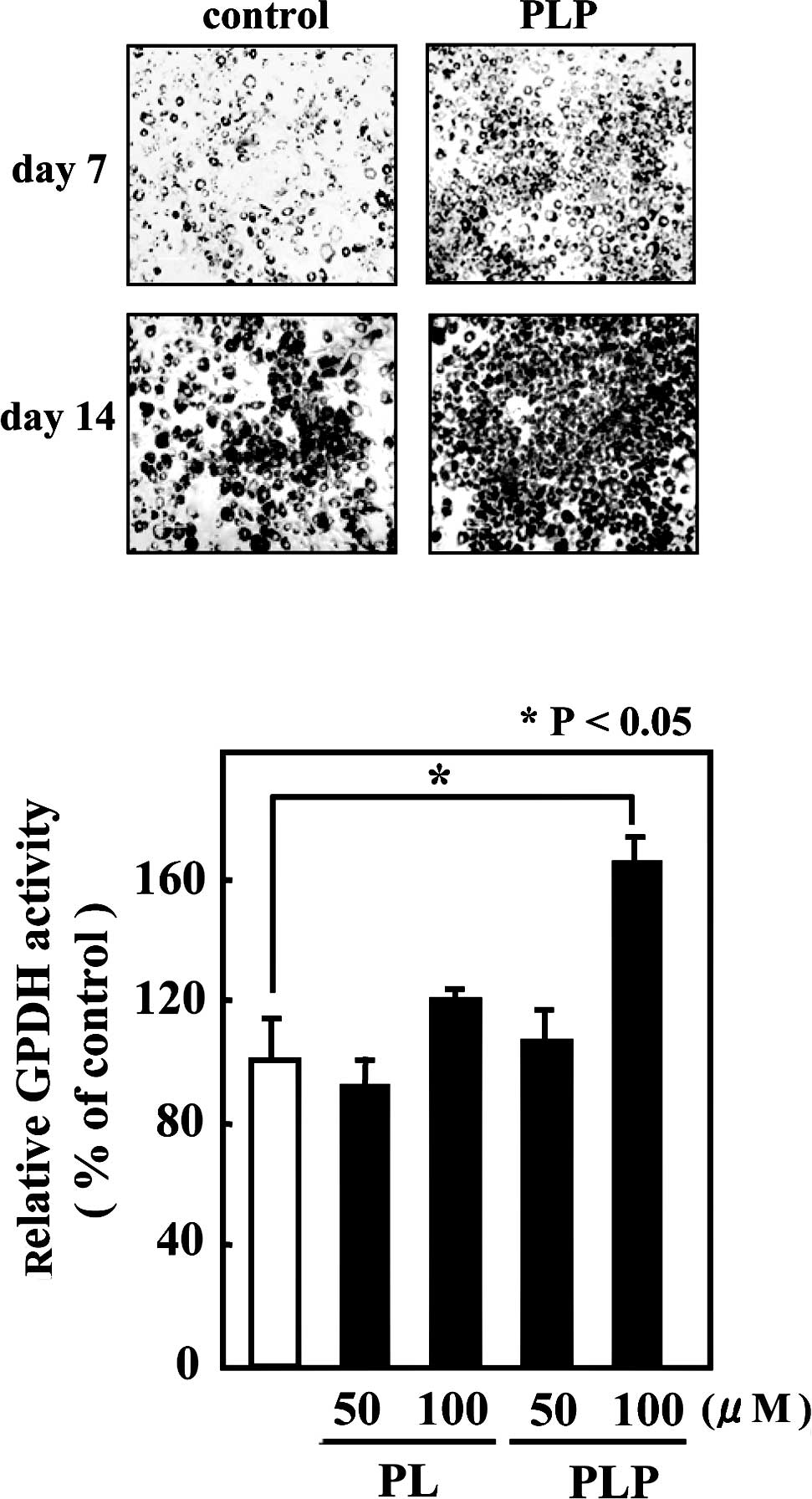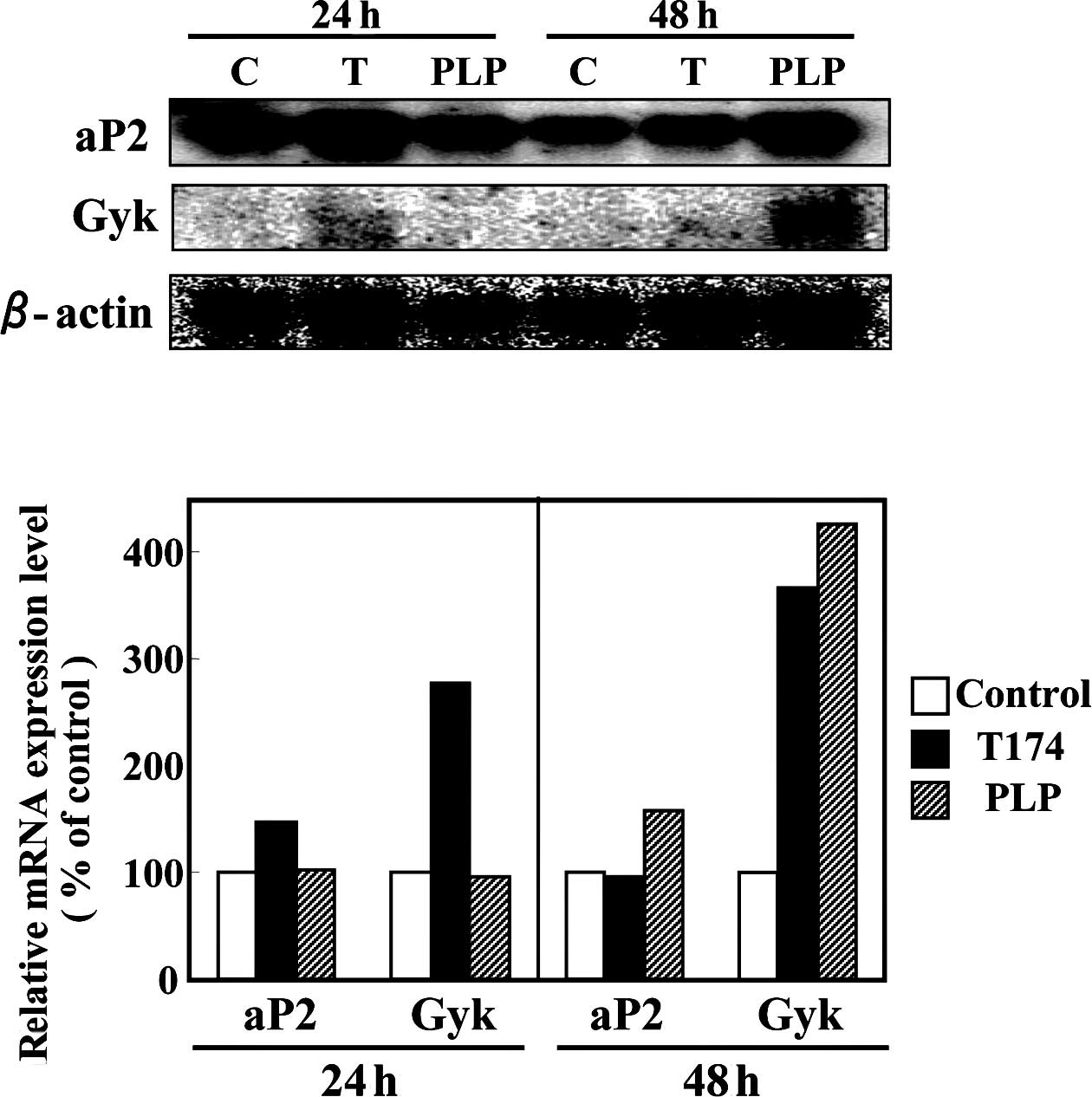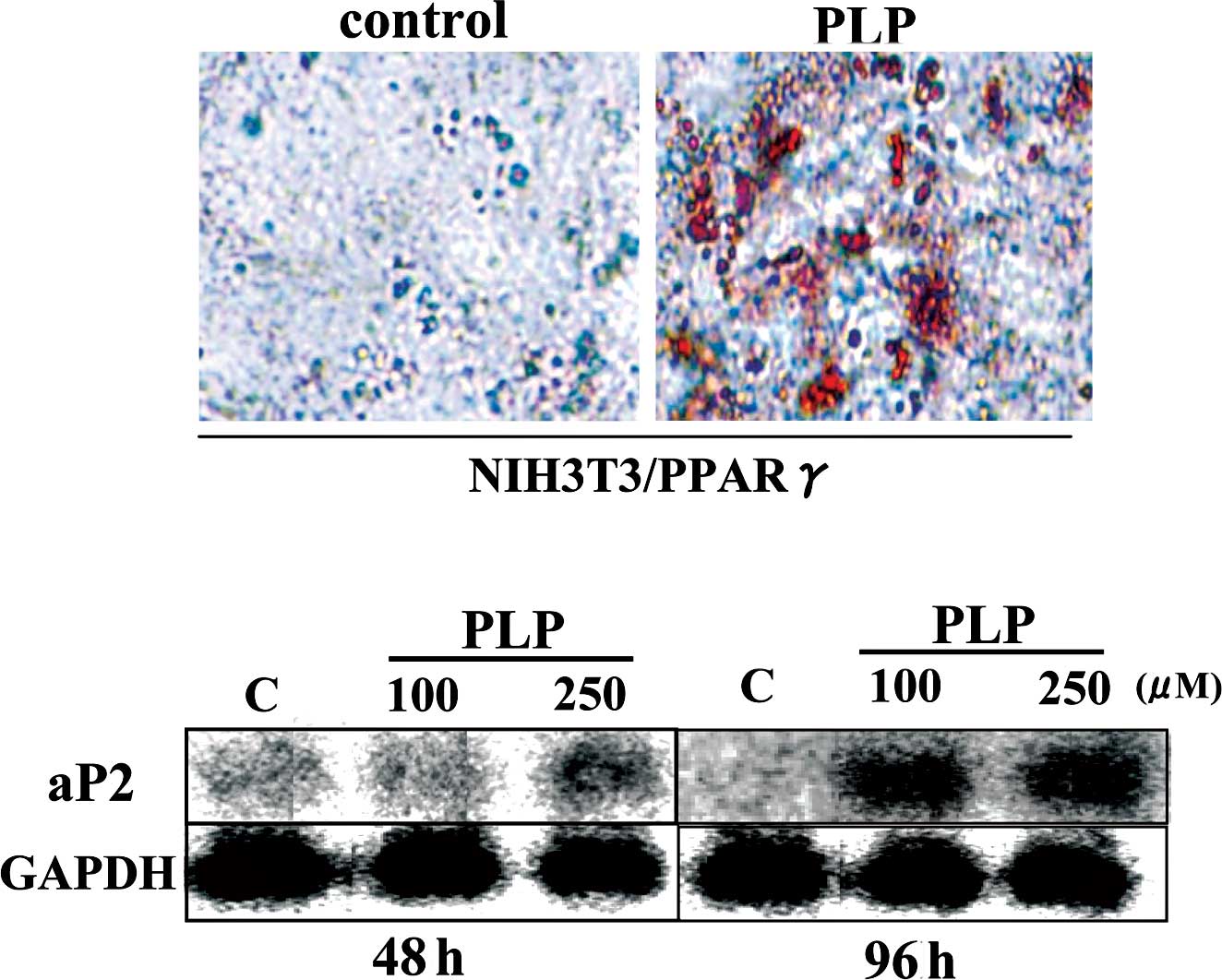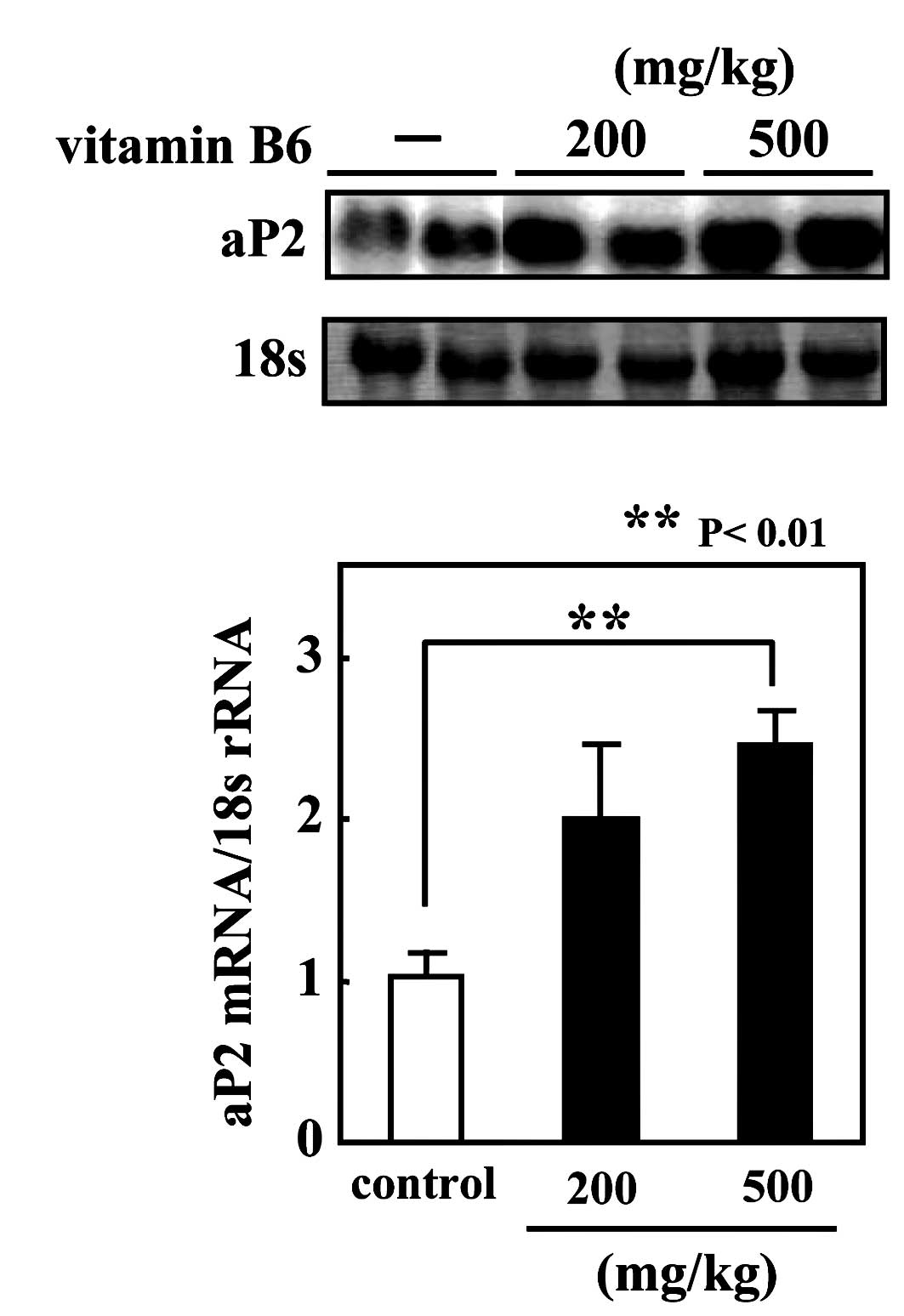|
1.
|
Moon WH and Kirksey A: Cellular growth
during prenatal and early postnatal periods in progeny of
pyridoxine-deficient rats. J Nutr. 103:123–133. 1973.PubMed/NCBI
|
|
2.
|
Haynes WG: Hyperhomocysteinemia, vascular
function and atherosclerosis: effects of vitamins. Cardiovasc Drugs
Ther. 16:391–399. 2002. View Article : Google Scholar : PubMed/NCBI
|
|
3.
|
Cattaneo M, Lombardi R, Lecchi A,
Bucciarelli P and Mannucci PM: Low plasma levels of vitamin B(6)
are independently associated with a heightened risk of deep-vein
thrombosis. Circulation. 104:2442–2446. 2001. View Article : Google Scholar : PubMed/NCBI
|
|
4.
|
Onorato JM, Jenkins AJ, Thorpe SR and
Baynes JW: Pyridoxamine, an inhibitor of advanced glycation
reactions, also inhibits advanced lipoxidation reactions. Mechanism
of action of pyridoxamine. J Biol Chem. 275:21177–21184. 2000.
View Article : Google Scholar
|
|
5.
|
Komatsu SI, Watanabe H, Oka T, Tsuge H,
Nii H and Kato N: Vitamin B-6-supplemented diets compared with a
low vitamin B-6 diet suppress azoxymethane-induced colon
tumorigenesis in mice by reducing cell proliferation. J Nutr.
131:2204–2207. 2001.
|
|
6.
|
Komatsu S, Watanabe H, Oka T, Tsuge H and
Kat N: Dietary vitamin B6 suppresses colon tumorigenesis,
8-hydroxyguanosine, 4-hydroxynonenal, and inducible nitric oxide
synthase protein in azoxymethane-treated mice. J Nutr Sci
Vitaminol. 48:65–68. 2002. View Article : Google Scholar : PubMed/NCBI
|
|
7.
|
Matsubara K, Mori M, Matsuura Y and Kato
N: Pyridoxal 5′-phosphate and pyridoxal inhibit angiogenesis in
serum-free rat aortic ring assay. Int J Mol Med. 8:505–508.
2001.
|
|
8.
|
Yanaka N, Koyama TA, Komatsu S, Nakamura
E, Kanda M and Kato N: Vitamin B6 suppresses NF-κB activation in
LPS-stimulated mouse macrophages. Int J Mol Med. 16:1071–1075.
2005.
|
|
9.
|
Kersten S, Desvergne B and Wahli W: Roles
of PPARs in health and disease. Nature. 405:421–424. 2000.
View Article : Google Scholar : PubMed/NCBI
|
|
10.
|
Braissant O, Foufelle F, Scotto C, Dauca M
and Wahli W: Differential expression of peroxisome
proliferator-activated receptors (PPARs): tissue distribution of
PPAR-alpha, -beta, and -gamma in the adult rat. Endocrinology.
137:354–366. 1996.
|
|
11.
|
Chawla A, Schwarz EJ, Dimaculangan DD and
Lazar MA: Peroxisome proliferator-activated receptor (PPAR) gamma:
adipose-predominant expression and induction early in adipocyte
differentiation. Endocrinology. 135:798–800. 1994.
|
|
12.
|
Tontonoz P, Hu E, Graves RA, Budavari AI
and Spiegelman BM: mPPAR gamma 2: tissue-specific regulator of an
adipocyte enhancer. Genes Dev. 8:1224–1234. 1994. View Article : Google Scholar : PubMed/NCBI
|
|
13.
|
Lehmann JM, Moore LB, Smith-Oliver TA,
Wilkison WO, Willson TM and Kliewer SA: An antidiabetic
thiazolidinedione is a high affinity ligand for peroxisome
proliferator-activated receptor gamma (PPAR gamma). J Biol Chem.
270:12953–12956. 1995. View Article : Google Scholar
|
|
14.
|
Forman BM, Tontonoz P, Chen J, Brun RP,
Spiegelman BM and Evans RM: 15-Deoxy-delta 12, 14-prostaglandin J2
is a ligand for the adipocyte determination factor PPAR gamma.
Cell. 83:803–812. 1995. View Article : Google Scholar : PubMed/NCBI
|
|
15.
|
Grommes C, Landreth GE and Heneka MT:
Antineoplastic effects of peroxisome proliferator-activated
receptor gamma agonists. Lancet Oncol. 5:419–429. 2004. View Article : Google Scholar : PubMed/NCBI
|
|
16.
|
Sarraf P, Mueller E, Jones D, King FJ,
DeAngelo DJ, Partridge JB, Holden SA, Chen LB, Singer S, Fletcher C
and Spiegelman BM: Differentiation and reversal of malignant
changes in colon cancer through PPARgamma. Nat Med. 4:1046–1052.
1998. View Article : Google Scholar : PubMed/NCBI
|
|
17.
|
Tanaka T, Kohno H, Yoshitani S, Takashima
S, Okumura A, Murakami A and Hosokawa M: Ligands for peroxisome
proliferator-activated receptors alpha and gamma inhibit chemically
induced colitis and formation of aberrant crypt foci in rats.
Cancer Res. 61:2424–2428. 2001.
|
|
18.
|
Osawa E, Nakajima A, Wada K, Ishimine S,
Fujisawa N, Kawamori T, Matsuhashi N, Kadowaki T, Ochiai M,
Sekihara H and Nakagama H: Peroxisome proliferator-activated
receptor gamma ligands suppress colon carcinogenesis induced by
azoxymethane in mice. Gastroenterology. 124:361–367. 2003.
View Article : Google Scholar : PubMed/NCBI
|
|
19.
|
Welch JS, Ricote M, Akiyama TE, Gonzalez
FJ and Glass CK: PPARgamma and PPARdelta negatively regulate
specific subsets of lipopolysaccharide and IFN-gamma target genes
in macrophages. Proc Natl Acad Sci USA. 100:6712–6717. 2003.
View Article : Google Scholar : PubMed/NCBI
|
|
20.
|
Appel S, Mirakaj V, Bringmann A, Weck MM,
Grunebach F and Brossart P: PPAR-gamma agonists inhibit toll-like
receptor-mediated activation of dendritic cells via the MAP kinase
and NF-kappaB pathways. Blood. 106:3888–3894. 2005. View Article : Google Scholar : PubMed/NCBI
|
|
21.
|
Kawada T, Aoki N, Kamei Y, Maeshige K,
Nishiu S and Sugimoto E: Comparative investigation of vitamins and
their analogues on terminal differentiation, from preadipocytes to
adipocytes, of 3T3-L1 cells. Comp Biochem Physiol A. 96:323–326.
1990. View Article : Google Scholar : PubMed/NCBI
|
|
22.
|
Yanaka N, Nogusa Y, Fujioka Y, Yamashita Y
and Kato N: Involvement of membrane protein GDE2 in retinoic
acid-induced neurite formation in Neuro2A cells. FEBS Lett.
581:712–718. 2007. View Article : Google Scholar : PubMed/NCBI
|
|
23.
|
Terzuoli L, Leoncini R, Pagani R,
Guerranti R, Vannoni D, Ponticelli F and Marinello E: Some chemical
properties and biological role of thiazolidine compounds. Life Sci.
63:1251–1267. 1998. View Article : Google Scholar : PubMed/NCBI
|
|
24.
|
Uppenberg J, Svensson C, Jaki M,
Bertilsson G, Jendeberg L and Berkenstam A: Crystal structure of
the ligand binding domain of the human nuclear receptor PPARgamma.
J Biol Chem. 273:31108–31112. 1998. View Article : Google Scholar : PubMed/NCBI
|
|
25.
|
Schoonjans K, Peinado-Onsurbe J, Lefebvre
AM, Heyman RA, Briggs M, Deeb S, Staels B and Auwerx J: PPARalpha
and PPARgamma activators direct a distinct tissue-specific
transcriptional response via a PPRE in the lipoprotein lipase gene.
EMBO J. 15:5336–5348. 1996.PubMed/NCBI
|
|
26.
|
Kodera Y, Takeyama K, Murayama A, Suzawa
M, Masuhiro Y and Kato S: Ligand type-specific interactions of
peroxisome proliferator-activated receptor gamma with
transcriptional coactivators. J Biol Chem. 275:33201–33204. 2000.
View Article : Google Scholar
|
|
27.
|
Robinson CE, Wu X, Nawaz Z, Onate SA and
Gimble JM: A corepressor and chicken ovalbumin upstream promoter
transcriptional factor proteins modulate peroxisome
proliferator-activated receptor-gamma2/retinoid X receptor
alpha-activated transcription from the murine lipoprotein lipase
promoter. Endocrinology. 140:1586–1593. 1990.
|
|
28.
|
Guan HP, Ishizuka T, Chui PC, Lehrke M and
Lazar MA: Corepressors selectively control the transcriptional
activity of PPARgamma in adipocytes. Genes Dev. 19:453–461. 2005.
View Article : Google Scholar : PubMed/NCBI
|
|
29.
|
Takahashi N, Kawada T, Goto T, Yamamoto T,
Taimatsu A, Matsui N, Kimura K, Saito M, Hosokawa M, Miyashita K
and Fushiki T: Dual action of isoprenols from herbal medicines on
both PPARgamma and PPARalpha in 3T3-L1 adipocytes and HepG2
hepatocytes. FEBS Lett. 514:315–322. 2002. View Article : Google Scholar : PubMed/NCBI
|
|
30.
|
Huq MD, Tsai NP, Lin YP, Higgins L and Wei
LN: Vitamin B6 conjugation to nuclear corepressor RIP140 and its
role in gene regulation. Nat Chem Biol. 3:161–165. 2007. View Article : Google Scholar : PubMed/NCBI
|
|
31.
|
Fritah A, Christian M and Parker MG: The
metabolic coregulator RIP140: an update. Am J Physiol endocrinol
Metab. 299:E335–E340. 2010. View Article : Google Scholar : PubMed/NCBI
|
|
32.
|
Leonardsson G, Steel JH, Christian M,
Pocock V, Milligan S, Bell J, So PW, Medina-Gomez G, Vidal-Puig A,
White R and Parker MG: Nuclear receptor corepressor RIP140
regulates fat accumulation. Proc Natl Acad Sci USA. 101:8437–8442.
2004. View Article : Google Scholar : PubMed/NCBI
|
|
33.
|
Christian M, Kiskinis E, Debevec D,
Leonardsson G, White R and Parker MG: RIP140-targeted repression of
gene expression in adipocytes. Mol Cell Biol. 25:9383–9391. 2005.
View Article : Google Scholar : PubMed/NCBI
|
|
34.
|
Debevec D, Christian M, Morganstein D,
Seth A, Herzog B, Parker M and White R: Receptor interacting
protein 140 regulates expression of uncoupling protein 1 in
adipocytes through specific peroxisome proliferator activated
receptor isoforms and estrogen-related receptor alpha. Mol
Endocrinol. 21:1581–1592. 2007. View Article : Google Scholar
|













